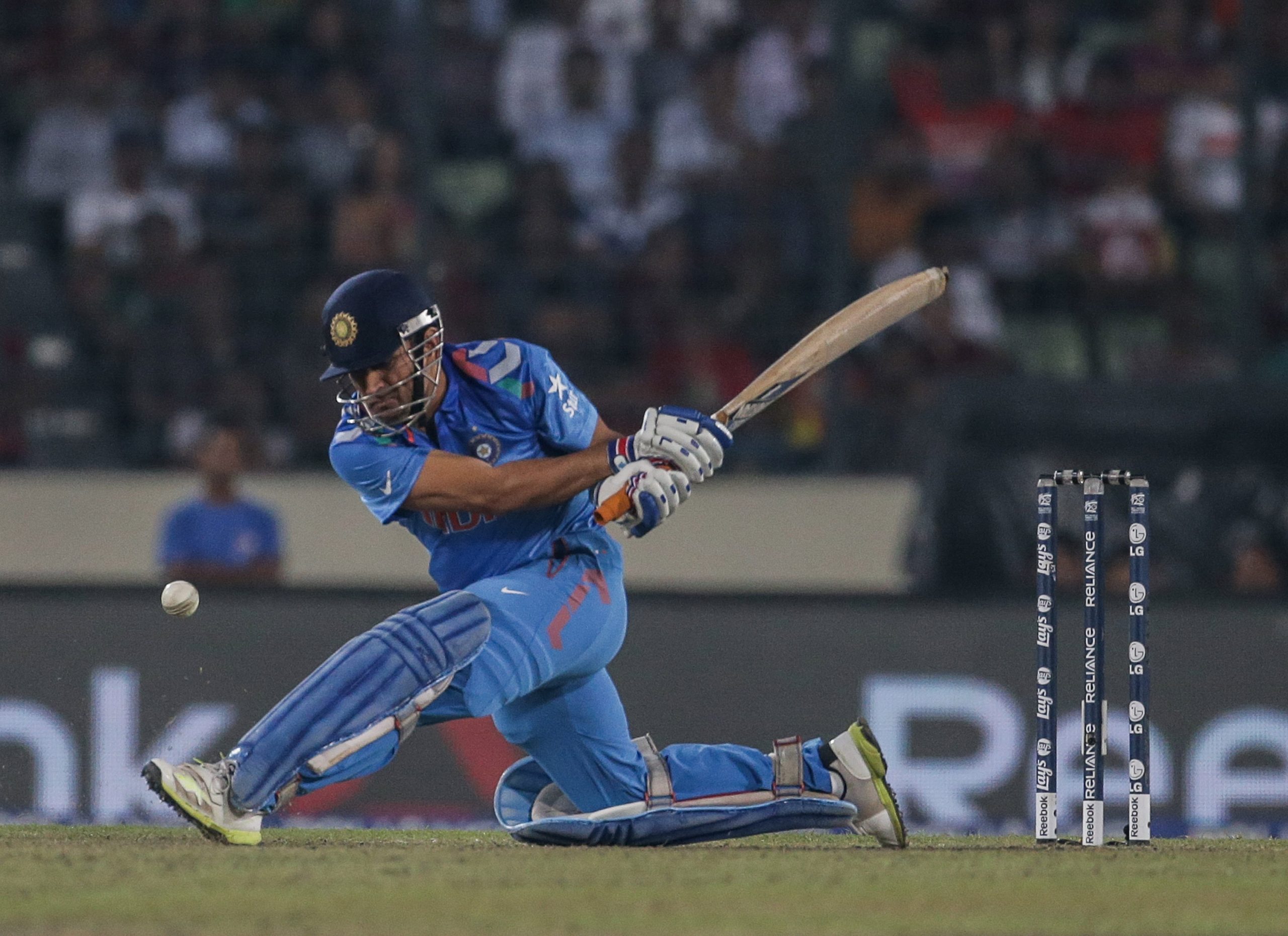By: Aditya Ahuja
A team total of 130 runs in a T20 game is not unusual, but picture a scenario where a team manages just 130 with six wickets still intact. That is precisely what transpired at the Sher-e-Bangla stadium in Mirpur, a decade ago.
Let’s delve into the events that unfolded on April 6; the night of the 2014 World T20 final between India and Sri Lanka.
Rain just before the flip of coin prompted Sri Lankan skipper Lasith Malinga to put India to bat. He anticipated that the dampness might make it difficult for batters to strike the ball cleanly. This proved true as India could only manage 31 runs in the powerplay, losing the wicket of Ajinkya Rahane (4).
Right after the powerplay, Virat Kohli (11* off 16 balls) got a reprieve when Malinga dropped him at mid-wicket off Rangana Herath’s bowling. The bowlers continued to maintain a tight grip on India’s run rate, preventing Rohit Sharma and Kohli from freeing up their arms.
By the halfway mark of their innings, the ‘Men in Blue’ had only scored 64 runs.
The departure of Rohit Sharma brought the seasoned Yuvraj Singh to the crease, who had been going through a rough patch in the tournament.
On one end, Kohli was trying his level best to ramp up the scoring rate, while on the other, Yuvraj was fighting his own battles, desperate to find the sweet spot of the bat, but struggling to rotate strike effectively and playing a string of dot balls in the process.
By the end of the 15th over, India’s score stood at 95-2.
At no point did the match give off the typical vibe of a T20 game. But India remained hopeful as they knew two of their best batters were at the crease, with skipper MS Dhoni, Suresh Raina and Ravindra Jadeja yet to arrive.
Kohli decided to take charge in the 16th over, as he hammered Nuwan Kulasekara for 14 runs of 3 balls; a six over wide long-on, a murderous drive through covers, and a full-blooded pull, which should have been caught by Senanayake but went for four.
Things suddenly looked a lot better for India, with a score around 160 on the cards. But who knew what lay ahead?
Yuvraj kept struggling for timing, unable to even find singles, which kept Kohli off strike for a considerable amount of time. What followed was something the game had never seen before.
Wide-yorkers shelling
The Lankan skipper, Lasith Malinga, unleashed barrage of yorkers outside off-stump, making it extremely challenging for the batters to make contact, let alone strike the ball effectively.
Although wide yorkers were not unfamiliar in the shortest format, employing them as the primary weapon with such remarkable consistency and precision was something that hadn’t been witnessed before.
After labouring to 11 runs from 21 balls, Yuvraj perished to a full toss by Kulasekara, lofted straight into the safe hands at long-on in the penultimate over. The Indian camp erupted in jubilation, for the torment had ceased, paving the way for the game’s so-called greatest finisher to take his guard. But, to everyone’s dismay, he too succumbed to the same strategy.
Instead of finding innovative ways to score runs, Dhoni tried to be a hero in Malinga’s final over, and went for the helicopter shot but only found frustration, as the ball slipped under his bat not once, not twice, but thrice.
Kohli, after taking Kulasekara to task in the 16th over, faced a mere 10 deliveries and managed 8 runs during the death overs. His urgency to get back on strike was clearly evident on his face during that demanding stretch; but let’s be fair, even divine intervention that night would have struggled to find an answer to Sri Lanka’s strategic brilliance that transcended conventional tactics.
India wrapped up their innings with a strange total of 130 for 4 in their allotted 20 overs, managing just 19 runs in the last four overs. The Indian supporters wore expressions of disbelief, unable to fully comprehend what had just unfolded before their eyes.
As expected, Sri Lanka chased down the total comfortably and beat India by 6 wickets to lift their first T20 World Cup.
Why couldn’t India find boundaries?
With the advent of technology, and with the edges and the sweet spot of the bats getting thicker and better, batters had started to shift away from the stumps, giving themselves room to execute a wild swing with the willow and if they did connect well, the ball was bound to go past the ropes, more often than not. Also, positioning their feet outside the line of the ball allowed batters to occasionally block deliveries.
To counter this, bowlers developed the wide yorker, which was not getting them wickets since the batters’ stumps are taken out of the equation, but it resulted in dot balls, which are gold-dust in T20 cricket.
That is exactly what we witnessed on the night of April 6.
Sri Lanka didn’t opt for the conventional death blow; instead, they orchestrated an agonising experience for the Indian batters, ensuring that every second spent at the crease was like navigating an unexplored galaxy in search of answers.














